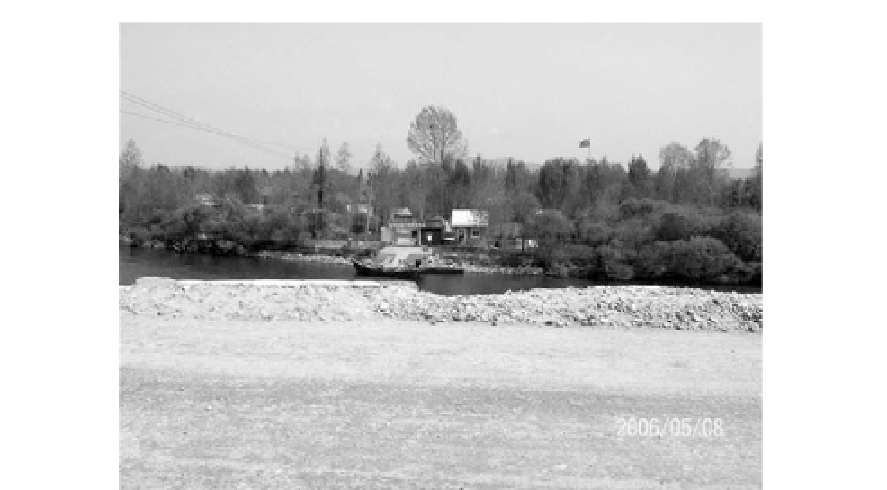Environmental Engineering Reference
In-Depth Information
Fig. 10.14
A stream functions as a boundary of land uses, plant communities, and some less mobile wildlife species
Movement of materials, energy, and organisms perpendicular to the flow of the stream is most effectively
filtered or barred, however, elements moving parallel to the stream corridor, along the edge, may also be
selectively filtered. The movement of nutrients, sediment, and water over land is filtered by the riparian
vegetation. Dissolved substances, such as nitrogen, phosphorus and other nutrients, entering a vegetated
river valley, are restricted from entering the channel by friction, root absorption, clay, and soil organic
matter.
Edges at the boundaries of stream corridors begin the process of filtering. Initial filtering functions are
concentrated into a tight area by sudden edges. These edges tend to be caused by disruptions and usually
encourage movement along boundaries while opposing movement between ecosystems. On the other
hand, gradual edges promote movement between ecosystems and increase filtering and spread it across a
wider ecological gradient. Gradual edges are found in natural settings and are more diverse (FISRWG,
1997).
10.1.4.4
Source and Sink Functions
Organisms, energy, and materials are supplied to the bordering area by rivers. Areas that function as
sinks absorb organisms, energy, or materials from the surrounding landscape. A stream can act as both a
source and a sink, as shown in Fig. 10.15. However, this is affected by the location of the stream and the
time of year. Although they may sometimes function as a sink, when flooding deposits new sediment
there, stream banks tend to act as a source, for example, of sediment to the stream. Genetic material
throughout the landscape is supplied by and moves through corridors, which at the landscape scale, act as
conduits or connectors to many different patches of habitats.
Surface water, ground water, nutrients, energy, and sediment can be stored in stream corridors, which
then act as a sink and allow materials to be temporarily stored in the corridor. Friction, root absorption,
clay, and soil organic matter prevent the entry of dissolved substances such as nitrogen, phosphorus, and
other nutrients into a vegetated stream corridor. Forman (1995) offers three sources and sink functions
resulting from floodplain vegetation: (1) decreased downstream flooding through floodwater moderation
and/or uptake; (2) containment of sediments and other materials during flood stage, and (3) source of soil
organic matter and water-borne organic matter.

Search WWH ::

Custom Search